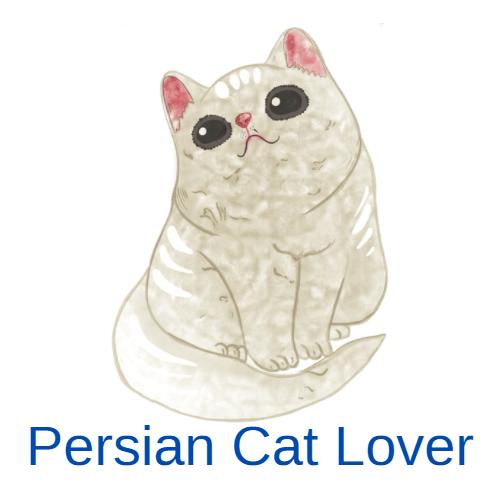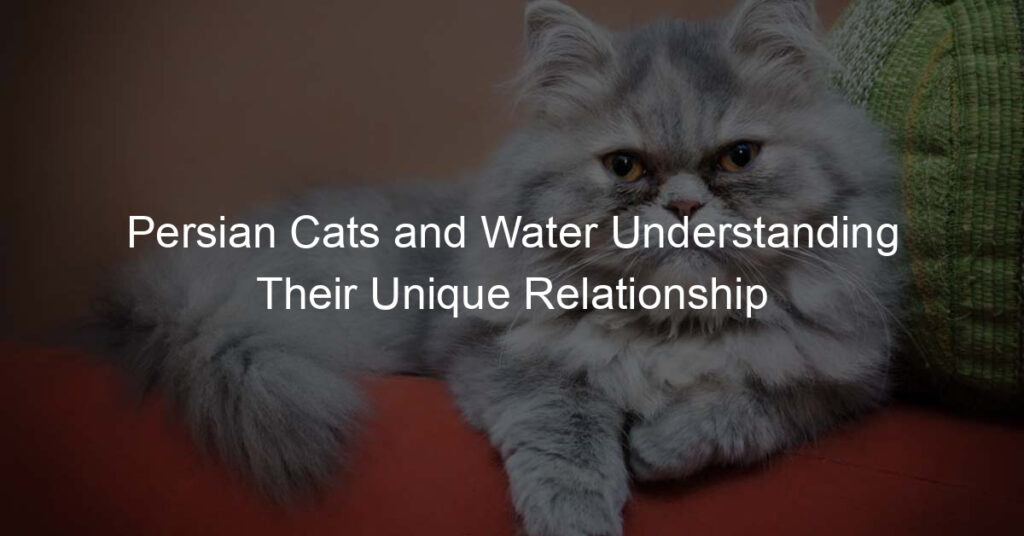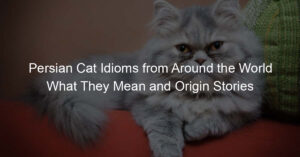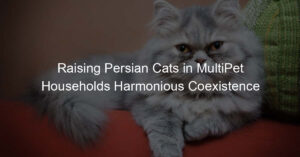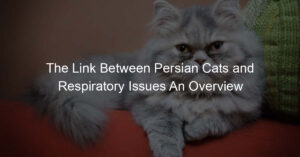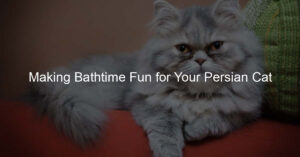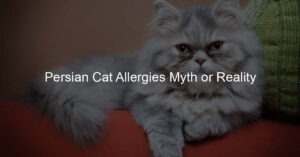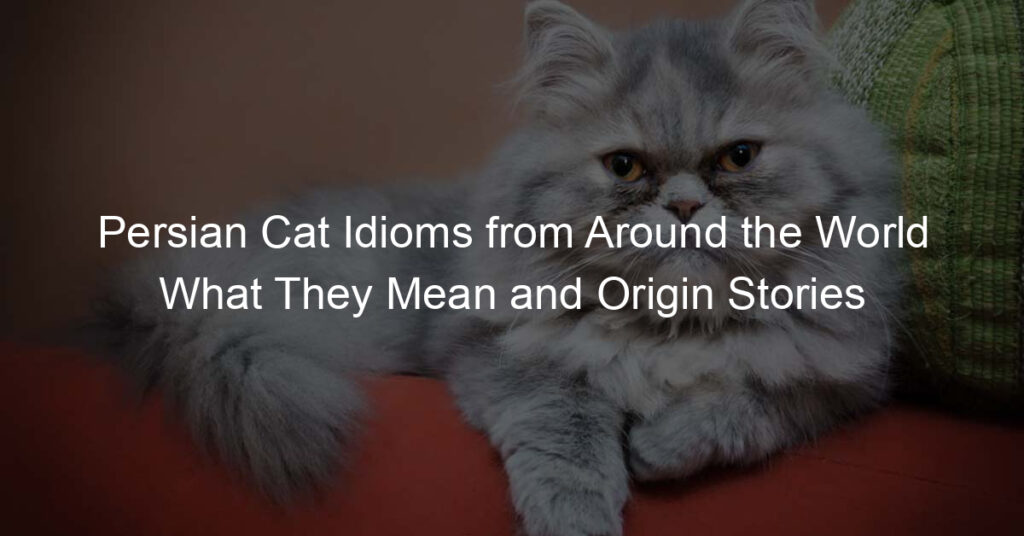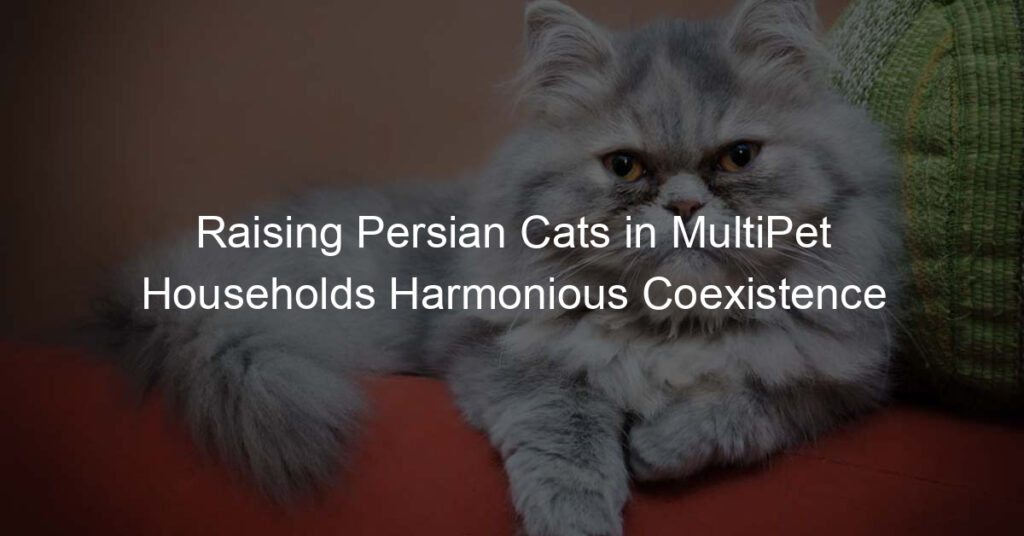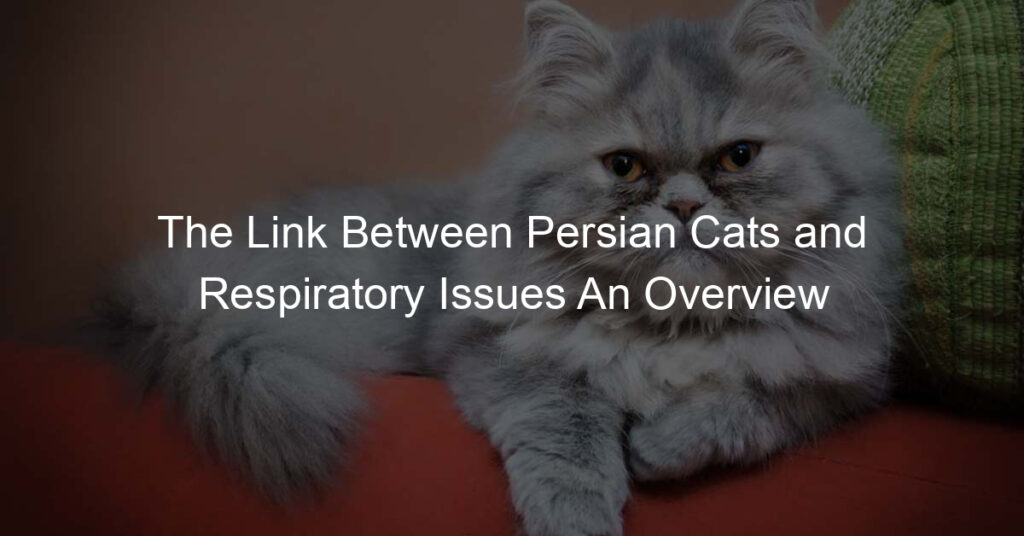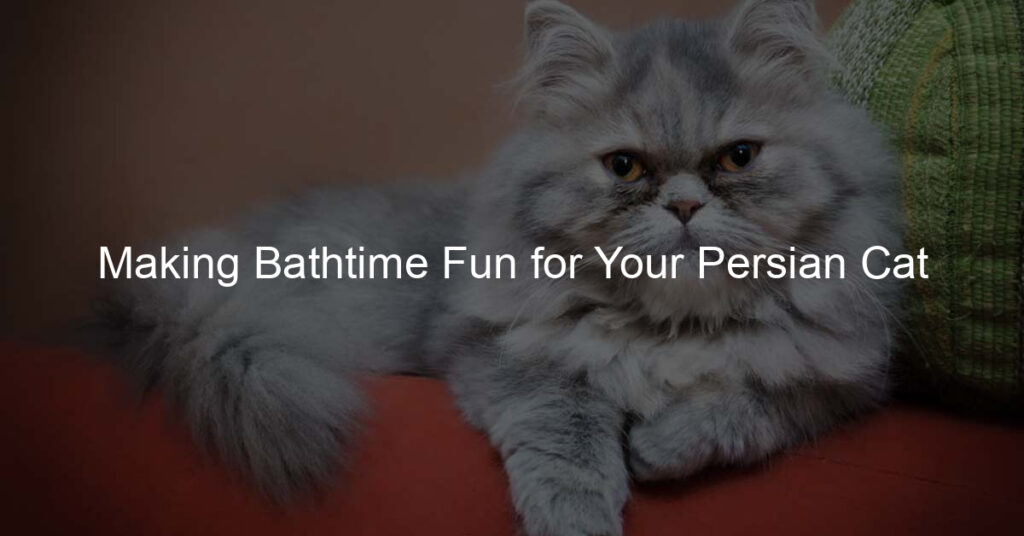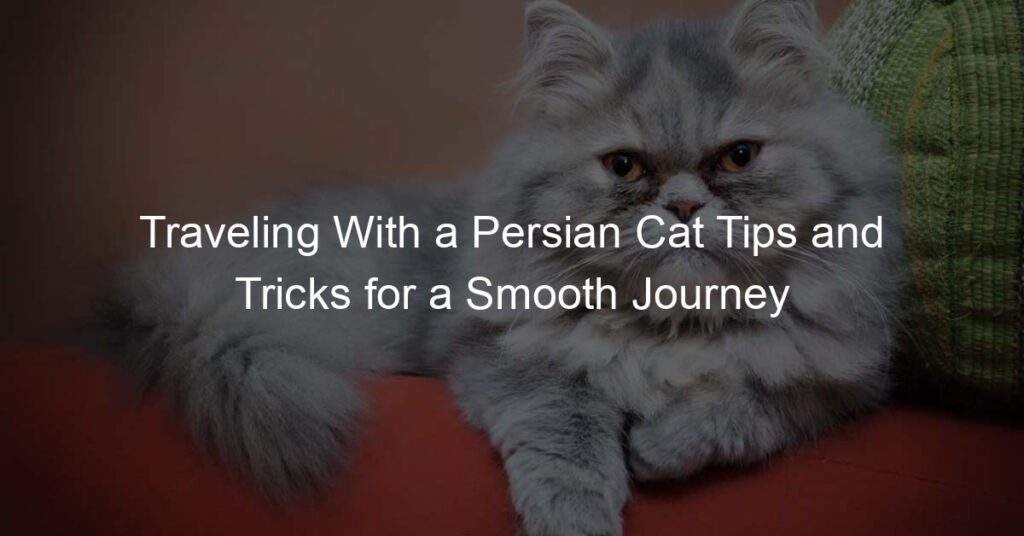Persian cats are known for their unique characteristics and behaviors, and one aspect that stands out is their relationship with water. Understanding this relationship is essential for the health and well-being of Persian cats. Here, we will explore why Persian cats are unique and delve into their interaction with water.
Persian cats are a distinct breed known for their luxurious, long coats, adorable round faces, and sweet temperament. They have specific traits that set them apart from other cat breeds.
These characteristics include a calm and gentle nature, a preference for a peaceful environment, and a moderate level of physical activity. Persian cats are also known for their expressive eyes and docile personalities.
When it comes to the relationship between Persian cats and water, it is no secret that many Persian cats tend to avoid water. It is not uncommon to find them displaying a dislike or fear of water. This aversion can be attributed to a combination of factors, including their dense and long coats that take a long time to dry, their preference for cleanliness, and their reserved nature.
While Persian cats may have an aversion to water, it is important to ensure that they stay adequately hydrated. Some Persian cats may have a tendency to drink less water compared to other breeds, which can be attributed to various factors, including their relatively low activity level and their preferences for certain types of water sources.
Proper hydration is crucial for the health and well-being of Persian cats. It helps support healthy kidney function, promotes proper digestion, and aids in maintaining overall hydration. Persian cats should ideally drink around 3.5 to 4.5 ounces (100-130 milliliters) of water per day to meet their hydration needs.
To ensure that Persian cats stay hydrated, it is important to take certain measures. Providing fresh and clean water in easily accessible locations is crucial. using water fountains or offering running water can entice Persian cats to drink more. Including wet food in their diet, which has a higher moisture content, can also contribute to their hydration.
Understanding the unique relationship between Persian cats and water is essential for their care. By implementing simple strategies to encourage hydration, you can help ensure the overall health and well-being of your Persian cat.
Key takeaway:
- Persian Cats and Water: Persian cats have a unique relationship with water, often avoiding it. Understanding the reasons behind their aversion to water is important in providing them with a safe and comfortable environment.
- Hydration Importance: Despite their preference for drinking less water, it is crucial to ensure Persian cats are adequately hydrated. Providing fresh water and incorporating wet food into their diet can help prevent dehydration.
- Grooming and Safety: Regular grooming is essential for Persian cats due to their long fur, which can become prone to matting. Additionally, creating a safe environment, free from potential water hazards, is vital for their well-being.
Why Are Persian Cats Unique?
Persian cats are unique for several reasons. Their distinctive physical appearance sets them apart from other cat breeds. Persian cats are known for their long, luxurious coats, round faces, and small, snub noses. These features give them a distinct and elegant look.
Persian cats have a calm and gentle temperament. They are known for their docile nature and enjoy a relaxed and peaceful environment. This makes them ideal pets for individuals or families seeking a low-energy companion.
Another unique trait of Persian cats is their need for regular grooming. Their long, dense coats require daily brushing to prevent matting and tangles. This grooming routine helps maintain the health and beauty of their coat, but it also requires a commitment of time and effort from their owners.
In addition to their physical appearance and temperament, Persian cats are prone to specific health issues. Their facial structure can lead to respiratory problems, and their long coats make them susceptible to skin and coat-related conditions. It is important for Persian cat owners to be aware of these potential health issues and provide regular veterinary care to ensure their cats’ well-being.
Persian cats stand out for their elegant looks, gentle temperament, grooming needs, and susceptibility to certain health issues. These unique characteristics make them a beloved and distinctive breed among cat lovers.
Why Are Persian Cats Unique?
What Are the Characteristics of Persian Cats?
What Are the Characteristics of Persian Cats? The characteristics of Persian cats can be described as follows:
- Long, luxurious coat: Persian cats are known for their beautiful, long fur. Their coats require regular grooming to prevent matting and keep them looking their best.
- Pronounced facial features: Persian cats have a distinctive face shape, with a flat nose and a round, broad head. Their large, expressive eyes are another notable feature.
- Sweet and gentle temperament: Persian cats are known for their calm and affectionate nature. They are typically friendly and enjoy the company of their human companions.
- Sedentary lifestyle: Persian cats are not especially active and prefer a laid-back lifestyle. They are content to spend their days lounging and observing their surroundings.
- Large and sturdy body: Persian cats have a solid and muscular build. They have a thick bone structure and a relatively heavy weight compared to other cat breeds.
- Tendency towards health issues: Persian cats are prone to certain health conditions, such as respiratory problems and eye issues. Regular veterinary check-ups and proper care are essential to keep them healthy.
- Affectionate towards children and other pets: Persian cats are generally good with children and get along well with other pets. They are patient and gentle, making them suitable for multi-pet households.
The Relationship Between Persian Cats and Water
Persian cats have a unique relationship with water, which is influenced by their breed characteristics and individual preferences. Understanding this special bond is crucial for the well-being and care of these cats.
When it comes to hydration, Persian cats have a lower thirst drive compared to other cat breeds. Therefore, it is important to ensure that they always have access to fresh and clean water. To encourage them to drink more, it is recommended to provide a shallow water bowl or a pet fountain.
Coat maintenance is another aspect to consider. Persian cats have long, thick fur that requires regular grooming to prevent matting and tangling. However, some Persians may dislike getting wet or being submerged in water, making it challenging to give them baths. To keep their coat clean and healthy, regular brushing and the use of specialized grooming products are essential.
The water temperature can also play a role in Persian cats’ well-being. Being sensitive to extreme temperatures, including the temperature of their drinking water, it is advisable to offer room temperature or slightly warm water, especially during colder months.
When it comes to the water source, Persian cats may have specific preferences such as filtered or bottled water. By introducing variations in water sources, you can determine what your Persian cat prefers and ensure they stay hydrated.
Monitoring your Persian cat’s water intake is crucial. By keeping track of their water consumption, you can identify any changes or potential health issues. Gradual increases or decreases in water intake may indicate underlying conditions that require veterinary attention.
Why Do Persian Cats Avoid Water?
Persian cats have always been known for their unique behavior of avoiding water. The question arises: Why do Persian cats avoid water? Well, there are a few reasons behind this interesting characteristic.
One reason is their sensitivity to water. Persian cats have long and dense coats, which can easily become soaked and heavy when wet. This makes them uncomfortable and hinders their movements. Their delicate fur also takes longer to dry, leaving them more susceptible to cold temperatures and discomfort.
Another factor is the lack of natural instinct. Unlike some other cat breeds, Persian cats do not have an innate desire to interact with water. Their ancestors did not come from environments where water played a significant role in their habitat. This likely influences their behavior towards water, making them less inclined to engage with it.
The fastidious grooming habits of Persian cats also contribute to their avoidance of water. They have a meticulous self-grooming routine that effectively keeps their fur clean. This grooming behavior often eliminates the need for bathing, which may explain why they prefer to stay away from water.
Additionally, water aversion during breeding has played a role in the avoidance of water in Persian cats. Breeders have intentionally avoided water-related activities during the breeding and socialization of kittens. This has helped maintain the breed’s distinct physical characteristics, including their luxurious coats.
It’s essential to remember that not all Persian cats have an aversion to water. Individual personalities and experiences can also impact their behavior. Understanding and respecting their natural inclination can create a safe and stress-free environment for these beautiful cats.
Do Persian Cats Drink Less Water?
Persian cats do not drink less water compared to other cat breeds. It is a common misconception that Persian cats have a lower water intake. Like all cats, Persian cats require proper hydration for their overall health and well-being.
Hydration is essential for Persian cats as it helps maintain their urinary tract health and prevents issues like urinary tract infections. It also aids in digestion and regulates body temperature.
Persian cats, despite some unique physical characteristics, do not drink less water than other cat breeds. Their flat faces and long, dense fur may give the impression of lower water intake. However, to ensure that Persian cats stay properly hydrated, it is important for owners to take certain measures.
Providing fresh and clean water is crucial. Cats are sensitive to the taste and smell of water, so keeping their water bowl clean and changing the water regularly is essential.
In addition, incorporating water fountains or providing running water can encourage Persian cats to drink more. Cats are naturally attracted to moving water, and having a flowing water source can make drinking more appealing to them.
Offering wet food with high moisture content is another effective way to increase water intake for Persian cats. Wet food can supplement their water consumption and provide them with additional hydration.
Keeping Persian cats hydrated is no joke – it’s a purr-sonal responsibility!
The Importance of Hydration for Persian Cats
Hydration is of utmost importance for the health and well-being of Persian cats. These majestic and graceful felines have specific requirements when it comes to water intake.
1. Essential Water Consumption: Persian cats necessitate a consistent and sufficient amount of water throughout the day. It is crucial that they have constant access to fresh and clean water. Maintaining hydration is vital for their overall well-being.
2. Prevention of Urinary Tract Issues: Persian cats are prone to urinary tract problems, including bladder stones and urinary tract infections. Adequate hydration aids in flushing out toxins and bacteria, reducing the risk of these issues.
3. Support for Kidney Function: Proper water intake is vital for maintaining optimal kidney function. It assists in preventing kidney diseases and facilitates the filtration of waste products from the body.
4. Avoiding Dehydration: Persian cats have a dense coat, which can make them more susceptible to dehydration, particularly in hot weather or when they are unwell. Ensuring they consume enough water helps prevent dehydration and associated health complications.
5. Water Source and Quality: It is important to provide clean and contaminant-free water to your Persian cat. Regularly changing the water bowl and keeping it clean ensures freshness and hygiene.
Pro-tip: Consider utilizing a pet water fountain to encourage your Persian cat to consume more water. The sound and movement of flowing water can capture their attention and stimulate their natural curiosity, ultimately increasing their water intake.
By comprehending the importance of hydration for Persian cats and taking measures to guarantee their access to clean water, you can effectively contribute to their overall health and well-being.
How Much Water Should Persian Cats Drink?
Persian cats have specific hydration needs that pet owners should be aware of in order to ensure their well-being. It is important to understand how much water Persian cats should drink to maintain their health.
1. On average, Persian cats should drink between 3.5 to 4.5 ounces (100 to 130 milliliters) of water per kilogram of body weight daily. This means that a 10-pound (4.5-kilogram) Persian cat should consume approximately 10 to 13.5 ounces (300 to 400 milliliters) of water each day.
2. The amount of water a Persian cat should drink can vary based on factors such as age, activity level, diet, and environmental conditions. In hotter weather or if a cat is prone to certain health conditions, they may require more water to stay properly hydrated.
3. Monitoring the water intake of your Persian cat is crucial. Make sure to measure the daily water consumption and track any significant changes. If your cat is drinking significantly more or less water than usual, it may indicate an underlying health issue that requires veterinary attention.
4. To encourage your Persian cat to drink an adequate amount of water, consider the following tips:
- Provide fresh and clean water at all times. Change the water daily to ensure its freshness.
- Consider using a water fountain or offering running water, as some cats prefer moving water.
- Include wet food with high moisture content in their diet to supplement their water intake.
5. Regular grooming is essential for Persian cats, as their long fur can increase their risk of dehydration. Mats and tangles can prevent them from properly grooming themselves, so regular brushing is necessary to maintain their coat and prevent discomfort.
Understanding how much water Persian cats should drink is crucial for their overall health and well-being. Ensuring they have access to fresh water, monitoring their intake, and providing them with a balanced diet will help keep them properly hydrated. By following these guidelines, you can help your Persian cat stay healthy and happy.
In history, Persian cats hold an esteemed position as one of the oldest and most distinguished cat breeds. Originating in Persia (modern-day Iran), they were highly valued pets among royalty and nobility. Persian cats were seen as symbols of luxury and opulence, with their unique long and silky fur captivating the hearts of those in ancient civilizations.
Over the centuries, Persian cats have maintained their popularity, becoming sought-after pets around the world. From their regal appearance to their calm and gentle nature, Persian cats continue to be cherished companions. Today, they hold a special place in popular culture and are often featured in movies, books, and media, further enhancing their iconic status.
Remember, understanding the relationship Persian cats have with water is crucial to their well-being, and by providing them with the right amount of water, you can help ensure they lead happy and healthy lives.
Ensuring Adequate Hydration for Persian Cats
Ensuring Adequate Hydration for Persian Cats is crucial for their overall health and well-being. Here are some tips to help keep them properly hydrated:
Make sure to provide your Persian cat with a constant supply of fresh and clean water. This will encourage them to drink more and stay hydrated.
Some Persian cats prefer drinking from moving water sources. Consider using a water fountain or providing access to a running faucet to entice them to drink more.
Incorporating wet food into your Persian cat’s diet can increase their overall moisture intake. Wet food has a higher water content compared to dry kibble, helping to keep them hydrated.
- Provide fresh and clean water:
- Use water fountains or running water:
- Offer wet food with high moisture content:
Ensuring that your Persian cat is adequately hydrated is essential for their overall health and well-being. By following these tips, you can help promote proper hydration and keep your Persian cat happy and healthy.
Keeping a Persian cat well-groomed is like watching a high-maintenance diva in the making.
Regular Grooming for Persian Cats
Regular grooming for Persian cats is crucial for maintaining their health and appearance. It is important to brush their coat daily using a wide-toothed comb or a slicker brush to prevent matting and tangles. Cleaning their eyes gently with a soft, damp cloth or tear stain remover is necessary to keep their eye area free from tear stains. Trimming their nails regularly with cat nail clippers or seeking professional help is essential to prevent discomfort and potential damage. To clean their ears, gently wipe the outer part with a damp cotton ball or specialized ear cleaning solution, avoiding any insertion into the ear canal. While they may not need frequent baths, occasional bathing using a cat-safe shampoo can help keep their coat clean and free from dirt and oils. Remember to create a calm and stress-free environment during grooming sessions and start grooming them from an early age for a more enjoyable experience for both you and your Persian cat.
Creating a Safe Environment for Persian Cats
- To ensure a safe environment for your Persian cat, it is important to incorporate the following precautions:
- Remove potential hazards: Ensure that your home is free of any substances or objects that may be harmful to your Persian cat, such as toxic plants, chemicals, sharp objects, and small items that can be swallowed.
- Create safe spaces: Set up designated areas in your home where your Persian cat can retreat and feel secure. This includes providing comfortable bedding, scratching posts, and toys to promote relaxation and reduce stress.
- Secure windows and balconies: Persian cats are known for their curiosity, so it’s essential to install window screens or balcony nets to prevent any accidental falls and keep them safely indoors.
- Monitor heat and humidity levels: Persian cats are sensitive to extreme temperatures, so it’s crucial to properly ventilate your home and maintain a comfortable climate throughout the year. Avoid exposing your cat to direct sunlight for extended periods.
- Prevent access to dangerous areas: Keep your Persian cat away from laundry machines, heaters, or any other potential hazards where their long fur can easily get tangled or caught.
- Provide appropriate hiding spots: Persian cats love to hide and feel safe, so ensure you have accessible hiding spots throughout your home, such as cat condos, boxes, or cozy nooks.
- Eliminate toxic substances: Keep household cleaners, insecticides, medications, and other hazardous substances securely stored in cabinets or high shelves out of your cat’s reach.
To enhance the safety of your Persian cat, remember to stay vigilant and regularly inspect your home for any potential dangers. By actively creating a safe environment, you can ensure a happy and healthy life for your beloved Persian companion.
Persian cats: the feline historians with a purr-fectly mysterious past.
The Historical Significance of Persian Cats
The historical significance of Persian cats can be traced back thousands of years, originating in the ancient land of Persia, which is present-day Iran. These exquisite felines have captivated humans with their distinctive features and charming personalities.
Throughout history, Persian cats have held a special place in the hearts of royalty and nobility. In ancient Persia, they were highly prized and revered, often seen in royal courts and palaces. The aristocracy adored these cats for their elegant appearance, captivating beauty, and graceful movements.
The historical significance of Persian cats extends beyond their association with the upper class. They were also cherished companions to poets, artists, and scholars, who found solace and inspiration in their presence. Their serene and regal demeanor made them perfect muses for creative minds.
In addition to their cultural value, Persian cats have made remarkable contributions to the world of cat breeding. They played a pivotal role in the development of many popular cat breeds, including the Himalayan, Exotic Shorthair, and Scottish Fold. Their unique genetics and distinct features have left an indelible mark on the feline world.
The historical significance of Persian cats continues to be celebrated today. They are beloved companions and cherished pets in households worldwide. Their elegance, charm, and affectionate nature have made them one of the most popular cat breeds globally.
Persian cats have become cultural icons, appearing in literature, art, and even cinema. Their influence on popular culture further illustrates their enduring historical significance.
Persian Cats in Popular Culture
In popular culture, Persian cats in popular culture have captivated the hearts of many and have become an iconic symbol. Here are some notable aspects of Persian cats in popular culture in popular culture:
1. Movies and TV shows: Persian cats have made appearances in various movies and TV shows, showcasing their luxurious and elegant demeanor. They often portray aristocratic or regal characters, adding a touch of sophistication to the screen.
2. Internet memes and videos: Persian cats have gained immense popularity on the internet, with their adorable and fluffy appearance making them a favorite subject for memes and videos. Their expressive faces and playful antics bring joy to millions of people worldwide.
3. Fashion and advertising: Persian cats have become a symbol of beauty and elegance in the fashion industry. They have been featured in high-end fashion campaigns, adding a touch of glamour to the advertisements. Their luxurious fur and striking features make them ideal models for showcasing luxury products.
4. Art and literature: Persian cats have been the subject of numerous paintings, illustrations, and literary works. Their graceful poses and distinct features have inspired artists and writers throughout history. They are often depicted as symbols of beauty, tranquility, and grace.
5. Pet companions: Persian cats have become popular pets among cat lovers around the world. Their gentle and calm nature makes them excellent companions for individuals seeking a serene and peaceful environment. Many people associate Persian cats with luxury and pampering, further enhancing their appeal.
Persian cats in popular culture have undoubtedly left a lasting impression. Whether they are gracing the silver screen, sparking joy on the internet, or adorning the pages of art and literature, these majestic felines continue to capture our imagination and hearts in popular culture.
Some Facts about “Persian Cats and Water: Understanding Their Unique Relationship”:
- ✅ Persian cats have a natural aversion to water due to their desert-dwelling ancestors and the limited availability of water in their natural habitat. (Source: Misgatosyyo)
- ✅ Persian cats have a unique drinking technique where they curl their tongues backward to form a spoon-like shape and create a column of water that they swiftly lift into their mouths. (Source: Misgatosyyo)
- ✅ Persian cats can consume water at an astonishing rate, with the ability to lap up four teaspoons of water in just one second. (Source: Misgatosyyo)
- ✅ Regular grooming is important for Persian cats as their long hair tends to shed, and it is also necessary to keep their paws and backend trimmed to prevent dirt and litter from accumulating. (Source: ASPCA Pet Insurance)
- ✅ It is recommended to scoop the litter box daily and empty it every two to three weeks to ensure that Persian cats continue using it and do not develop an aversion to a messy litter box. (Source: ASPCA Pet Insurance)
Frequently Asked Questions
1. Why do Persian cats have a complicated relationship with water?
Persian cats have a mysterious aversion to water due to their desert-dwelling ancestors and the scarcity of water in their natural habitat. This evolutionary history has influenced their unique traits and their dislike for getting wet.
2. How do Persian cats drink water?
Persian cats have a sophisticated technique for drinking water. They curl their tongues backward to form a spoon-like shape and create a column of water that they swiftly lift into their mouths. This allows them to consume water at an astonishing rate, lapping up four teaspoons of water in just one second.
3. Can Persian cats be bathed or groomed?
Yes, Persian cats can be bathed and groomed, but it requires a delicate approach. Due to their fluffy coats, grooming is important to keep their magnificent coat in pristine condition and contribute to their overall well-being. Regular brushing and bathing are necessary to prevent their long hair from shedding excessively.
4. How can I make bath time a positive experience for my Persian cat?
To make bath time a positive experience for your Persian cat, use positive reinforcement and soft words. Start by introducing your cat to water gradually and ensure that the water temperature is comfortable. It can also help to have treats and toys nearby as a distraction and reward for your cat’s cooperation during bath time.
5. Why do Persian cats hate getting their paws wet?
Persian cats tend to dislike getting their paws wet because they have a natural instinct to stay dry. This may be attributed to their ancestors’ need to preserve energy and avoid stagnant water, which could potentially be dirty and harmful. Keeping their paws dry gives them a sense of comfort and cleanliness.
6. Is it safe to introduce Persian cats to swimming or other water activities?
Introducing Persian cats to swimming or other water activities can be an intimidating prospect and is generally not recommended. Persian cats are not known for their swimming abilities, and their serene demeanor does not typically lend itself to such activities. It is important to prioritize their safety and well-being by ensuring they are kept away from open bodies of water.
